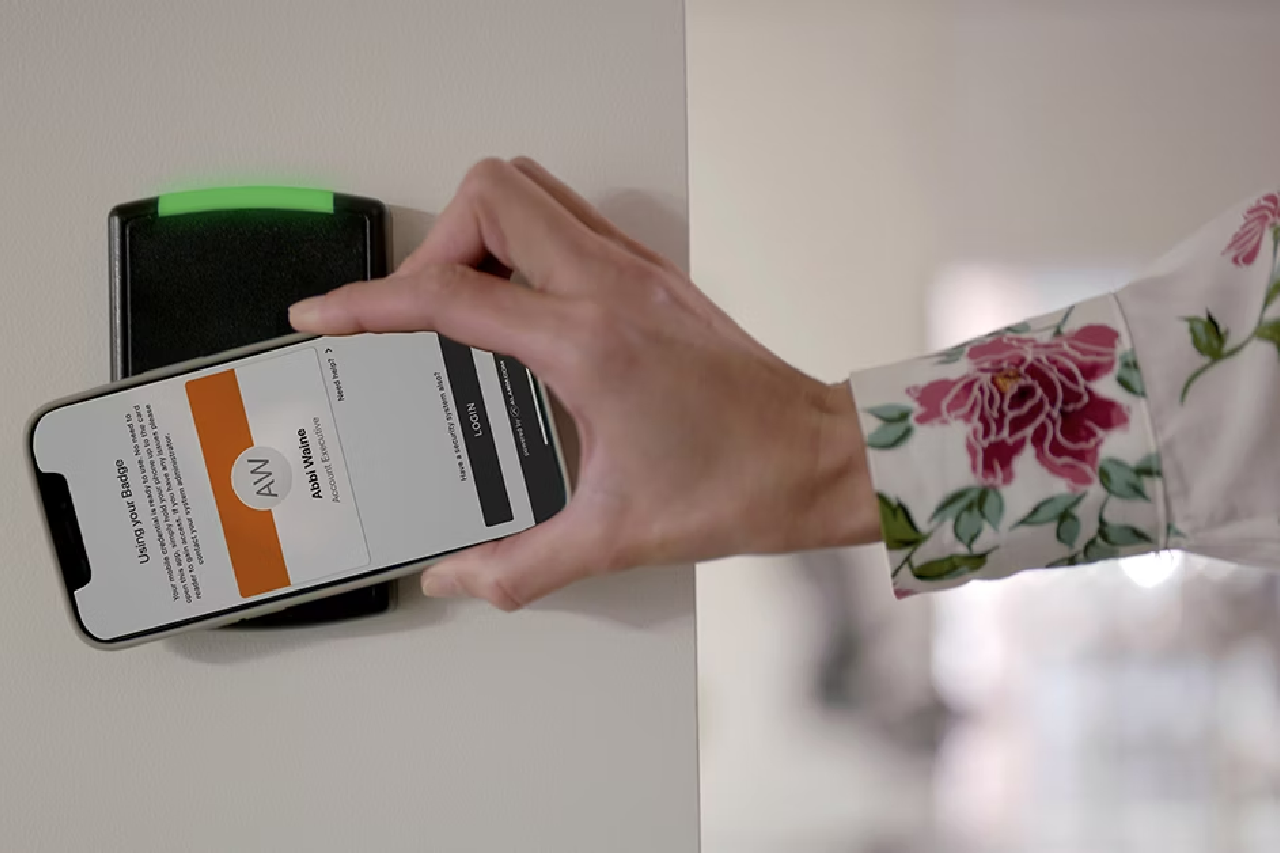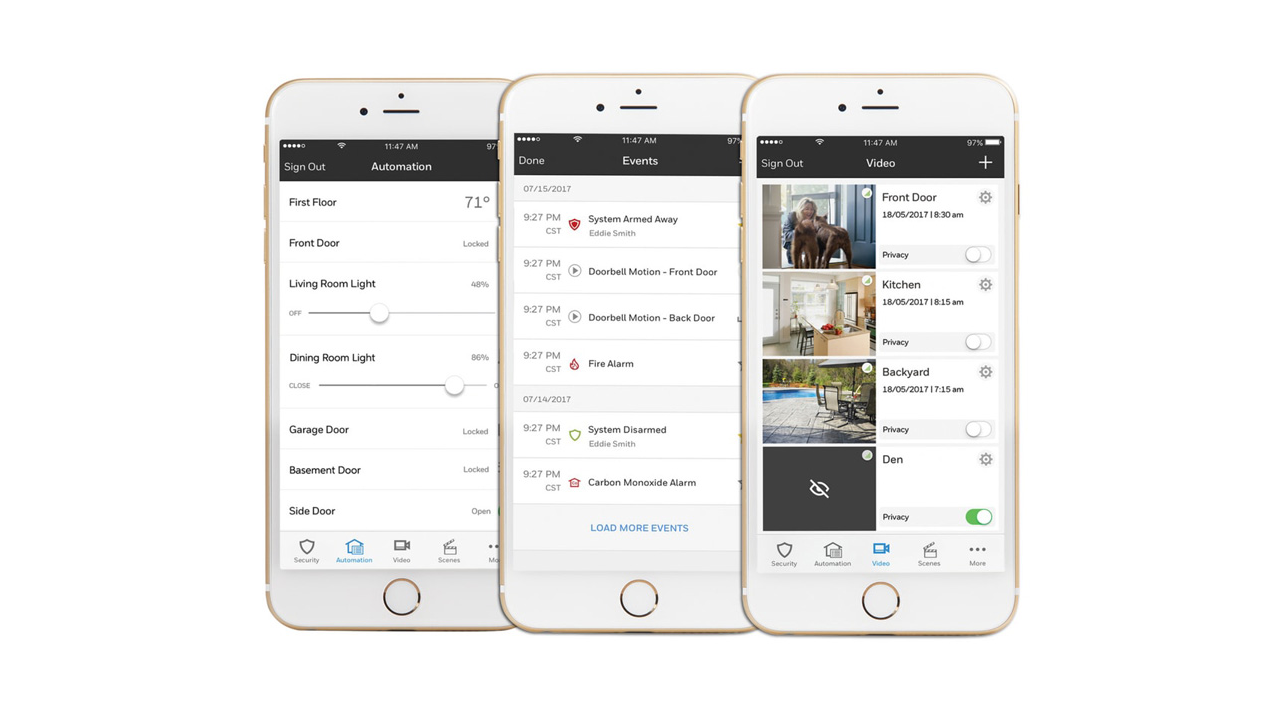Last Updated on May 21, 2024 by Alarm New England
Physical security is a critical aspect of safeguarding assets, data, and personnel within any organization. One of the primary tools used to enforce physical security is the Access Control System (ACS). These systems are designed to manage and monitor who can enter and exit specific areas or buildings, ensuring that only authorized individuals gain access. Access Control Systems come in various forms, each with its unique features and capabilities tailored to specific security needs. In this article, we will explore the different types of Physical Access Control Systems and their applications.

1. Traditional Key-Based Systems
The oldest and most basic form of access control is the traditional key-based system. It relies on physical keys, locks, and lock cylinders. While simple and cost-effective, these systems have numerous limitations, such as the ease of duplication and the inconvenience of managing physical keys.
Advantages:
- Simple and intuitive for users.
- Cost-effective for small-scale applications.
- No power source or network connectivity required.
Disadvantages:
- Susceptible to key duplication and unauthorized access.
- Limited audit trail capabilities.
- Inconvenient for large-scale deployments.
2. Mechanical Combination Locks
Mechanical combination locks use a series of numbers or symbols to grant access. Users must enter the correct combination to unlock the door or gate. These locks are robust and do not rely on electricity or batteries, making them suitable for outdoor applications.
Advantages:
- No need for keys or cards.
- High durability and resistance to environmental conditions.
- Suitable for low to medium-security areas.
Disadvantages:
- Limited user tracking capabilities.
- Vulnerable to “shoulder surfing” if the combination is observed.
- Code management can be cumbersome for large user groups.
3. Smart Card Access Control
Smart card access control systems use proximity cards, contactless smart cards, or magnetic stripe cards to grant access. Users present their cards to a card reader, which then verifies the card’s information and grants or denies access. These systems offer higher security and more advanced features compared to traditional key-based methods.
Advantages:
- Enhanced security through encryption and authentication.
- Easy issuance and revocation of access privileges.
- Detailed audit trails for access monitoring.
Disadvantages:
- Cards can be lost or stolen, posing a security risk.
- Requires power for card readers.
- Initial setup costs can be higher than traditional systems.
4. Biometric Access Control
Biometric access control systems use unique biological traits to verify an individual’s identity. Common biometric methods include fingerprint recognition, facial recognition, iris scanning, and hand geometry. These systems offer an exceptionally high level of security, as they are nearly impossible to replicate or share.
Advantages:
- Extremely high accuracy and security.
- Eliminates the need for keys, cards, or codes.
- Prevents unauthorized access due to the uniqueness of biometric data.
Disadvantages:
- Can be expensive to implement and maintain.
- Privacy concerns and legal considerations.
- Some biometric methods may have limitations, such as difficulty recognizing individuals with certain disabilities.
5. Keypad Access Control
Keypad access control systems require users to enter a unique PIN (Personal Identification Number) on a keypad to gain access. The PIN can be changed regularly for added security, and access can be restricted based on the PIN entered.
Advantages:
- Cost-effective and easy to implement.
- High flexibility in changing access codes.
- Suitable for both indoor and outdoor applications.
Disadvantages:
- Vulnerable to unauthorized code sharing.
- Limited security if not combined with other authentication methods.
- Requires users to remember and input PINs accurately.
6. Proximity Card Access Control
Proximity card access control systems use radio frequency identification (RFID) technology to communicate between the card and the reader. When the card is presented near the reader, it sends a signal to unlock the door or gate.
Advantages:
- Quick and convenient access.
- Suitable for high-traffic areas.
- Can be integrated with other security systems.
Disadvantages:
- Vulnerable to card cloning if not properly secured.
- Cards can be lost or stolen.
- Limited security if used as the sole authentication method.
7. Mobile Access Control
Mobile access control is a modern solution that leverages smartphones as access credentials. Users download an app that communicates with the access control system. When they approach a secured area, they can unlock doors or gates with their smartphones.
Advantages:
- Convenient and contactless.
- Enhanced security through biometric authentication on smartphones.
- Easy issuance and revocation of access privileges.
Disadvantages:
- Requires smartphones with compatible technology.
- Vulnerable to smartphone theft or hacking.
- Potential compatibility issues with various smartphone models.
8. Wireless Access Control Systems
Wireless access control systems use wireless communication protocols to connect various components, such as card readers, door locks, and controllers. These systems are flexible and scalable, making them suitable for both small and large installations.
Advantages:
- Simplified installation and scalability.
- Remote management and monitoring capabilities.
- Easy integration with other security systems.
Disadvantages:
- Vulnerable to interference and hacking if not properly secured.
- Initial setup costs can be higher than traditional wired systems.
- Dependence on power sources for wireless devices.
9. Cloud-Based Access Control
Cloud-based access control systems store access data and settings in the cloud, allowing for remote management and monitoring. Users can access and control the system from anywhere with an internet connection.
Advantages:
- Remote management and real-time access control.
- Automatic updates and scalability.
- Reduced infrastructure costs.
Disadvantages:
- Dependence on internet connectivity for system operation.
- Data security and privacy concerns.
- Potential downtime if the cloud service experiences issues.
10. Integrated Access Control Systems
Integrated access control systems combine multiple authentication methods and security components to create a comprehensive security solution. These systems may include video surveillance, alarms, and intrusion detection in addition to access control.
Advantages:
- Comprehensive security coverage.
- Enhanced situational awareness through integration.
- Customizable to meet specific security needs.
Disadvantages:
- Higher complexity and initial costs.
- Requires skilled personnel for setup and maintenance.
- Potential compatibility issues between integrated components.
Looking Ahead: Advancements in Access Control Systems
Choosing the right type of Physical Access Control System is essential for maintaining security and protecting valuable assets. The choice of system should be based on the specific needs and risk factors of the organization or facility. While traditional key-based systems and mechanical locks still have their place, modern technologies like smart cards, biometrics, and cloud-based solutions offer enhanced security and convenience. As technology continues to advance, access control systems will likely become even more sophisticated, providing organizations with increasingly effective ways to control and monitor physical access to their premises.






